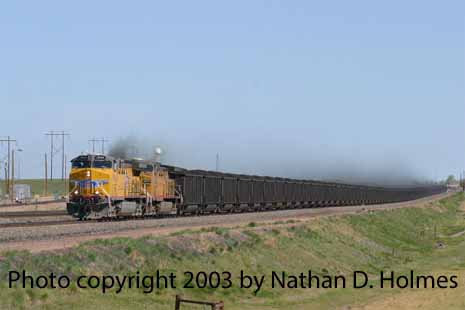A team of scientists led by Dr. Dan Jaffe, professor of Atmospheric and Environmental Chemistry at the University of Washington, carried out a study of pollution emitted from coal trains and freight trains in the Columbia River Gorge. The study examined emissions of diesel particulate matter and coal dust from 293 freight trains and 74 coal trains during a two-month period. The results shows that coal trains emit nearly twice the amount of fine-particle pollution, called PM 2.5, compared to other kinds of trains. Moreover, videos of some coal trains revealed large black plumes of coal dust blowing from the uncovered coal cars.
Increased levels of fine particulate matter are associated with a number of adverse health outcomes including: increased cancer rates, respiratory and cardiac disease, and associations with neurodevelopmental disorders. The most vulnerable populations are the elderly, pregnant women, children, and people with existing disease.
PM2.5, the particulate matter known to be a public health risk, peaks during a coal train passage are nearly 90 percent higher than those during a freight train passage.
The study results were released in November in a peer-reviewed study in the journal Atmospheric Pollution Research.
Jaffe’s data demonstrate that, on average, a diesel-powered open-top coal train releases nearly twice as much respirable total particulate matter (PM2.5—particulate matter with a diameter less than 2.5 micrometers) compared to a diesel-powered freight train. In addition, they found that 5.4 percent of all coal trains were “super-dusters,” generating visible dust plumes, captured by video camera, and having the highest concentrations of respirable particulate matter.
The U.S. Environmental Protection Agency has found PM2.5 to be a significant public health risk. Because PM2.5 is so fine that it can be inhaled unfiltered into the lungs, short-term and long-term exposure are associated with a broad range of negative health impacts, including respiratory and cardiovascular effects, as well as premature death (U.S. EPA, Report to Congress on Black Carbon, March 2012).
The article and supplemental video files can be accessed here.
Read more coal stories here.
Read more:
Investigation of Ramaco Principals Reveals Shady History
Current State of Coal Industry and Mineral Tax Collection Creates a Tax Time-bomb
Unanimous Vote by Wyoming Environmental Quality Council Clears the Way for Strong Self-Bonding Rules


